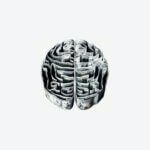The US regulator for automotive safety, the National Highway Traffic Safety Administration (NHTSA), has just announced a change in the rules covering driving inspired by the predictable growth of autonomous vehicles.
The changes come from an open consultation in which many of the companies working in this field have participated. From now on, for example, it will no longer be compulsory for a vehicle to have rear-view mirrors, since they benefit nobody when driving is carried out by an algorithm that perceives its environment through cameras, lidar, radar and other similar sensors. Logically, an autonomous vehicle will not have to have a steering wheel, pedals or other components a human would require. In fact, it will no longer even be compulsory for vehicles to have a driving position as such, and in the case of goods vehicles, not even a passenger seat.
This entire set of rules, which in the case of the United States are set forth in the Federal Motor Vehicle Safety Standards (FMVSS), had become a problem for manufacturers of autonomous vehicles, who until now have been obliged to include components that were completely unnecessary. In fact, this is one of the questions that always came up in my classes when I used a video of autonomous driving where you could see the steering wheel of the vehicle moving by itself: why have a steering wheel if nobody is using it? It was simply there because by the law said so. By definition, a vehicle had to have a steering wheel.
These changes affect a lot more things than might appear. Many people are surprised, for example, when they see autonomous vehicles for urban transportation that basically look like a giant toaster on wheels. What is the reason for this change? The logical thing to do when a vehicle has electric motors incorporated into each axle, is that its gears are completely reversible, which means that the vehicle no longer requires a front and a rear.
Years ago, the governor of the state of Arizona, Doug Ducey, made the decision to make life easy for companies working on autonomous driving. He understood that this was the best way to protect the lives of people in the medium term: one of the attractions of autonomous driving is the huge reduction in deaths in traffic accidents (the sensors and algorithms perceive the environment much better than any human being, have better reflexes, and don’t get drunk or suffer from road rage). The decision paid off: Arizona has a benign climate and well-maintained road infrastructure, making it an ideal place to test autonomous vehicles.
As a result, several leading companies moved to cities in his state, and there was only one fatal accident, clearly due to negligence on the part of the company that developed the tests. The experience was also an opportunity to test the reactions of Arizona’s residents, while in the meantime, the state became a hub for this technology, generated specialized employment, and a look into a future that will soon be everywhere.
The way in which we move is going to change a lot in the next few years. Cities will change, they will no longer be designed around the car, but instead around people; they will incorporate many more green areas in which to walk or ride a bicycle or a scooter, they will eliminate road parking and use that space for other things, while transforming their public transportation systems to make them electric and autonomous. The plans of Paris and its mayor Anne Hidalgofor the city’s iconic Champs Elysées, or the way it is encouraging the use of bicycles throughout the city, offer a glimpse into the future, and triggers the interest of companies such as Renault or Waymo to experiment there.
Working on the same old models at a time of intense technological change is a wasted opportunity. It’s time for cities — and for all of us — to get on the program.Follow me on Twitter or LinkedIn. Check out my website or some of my other work here.





























